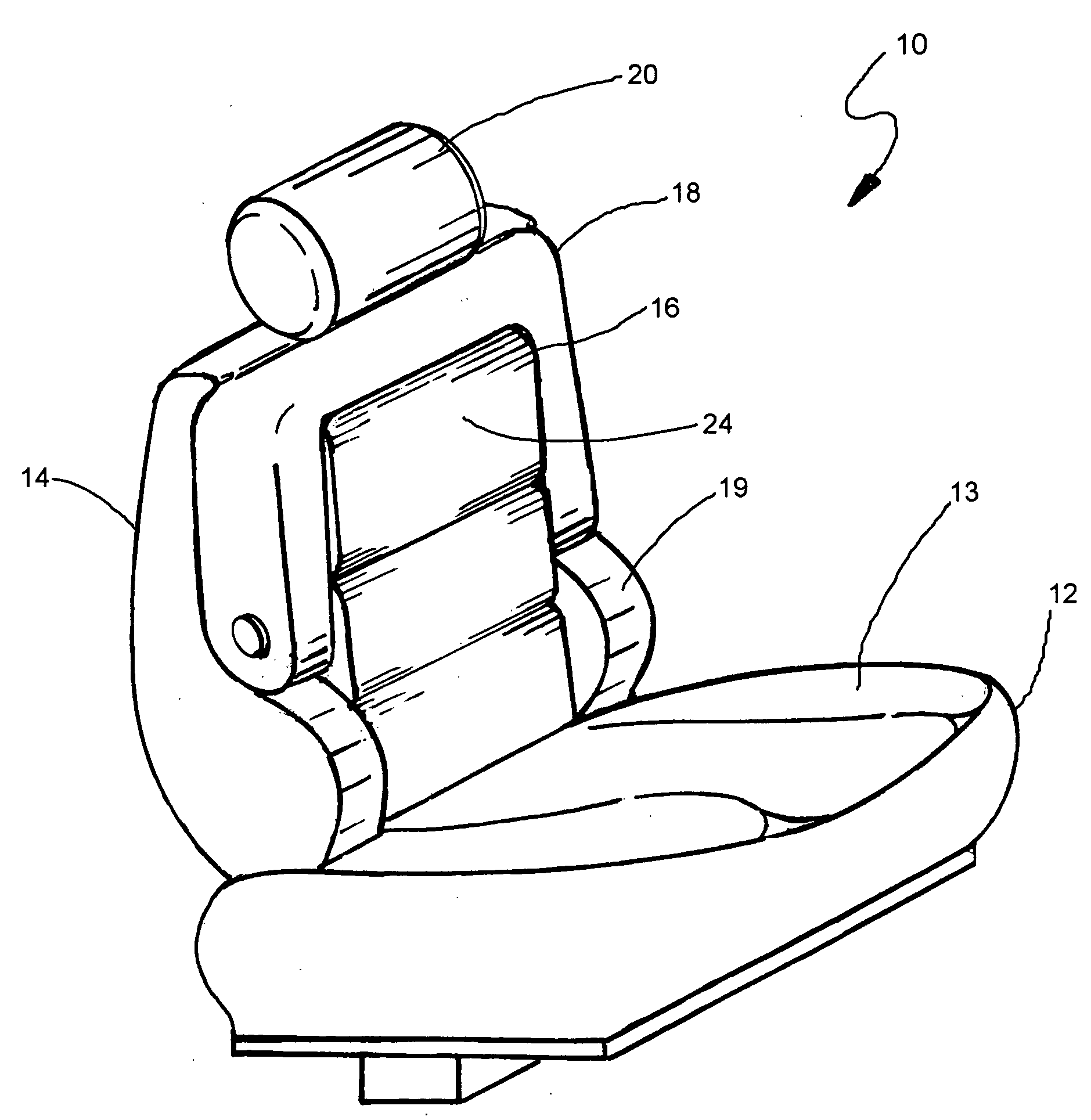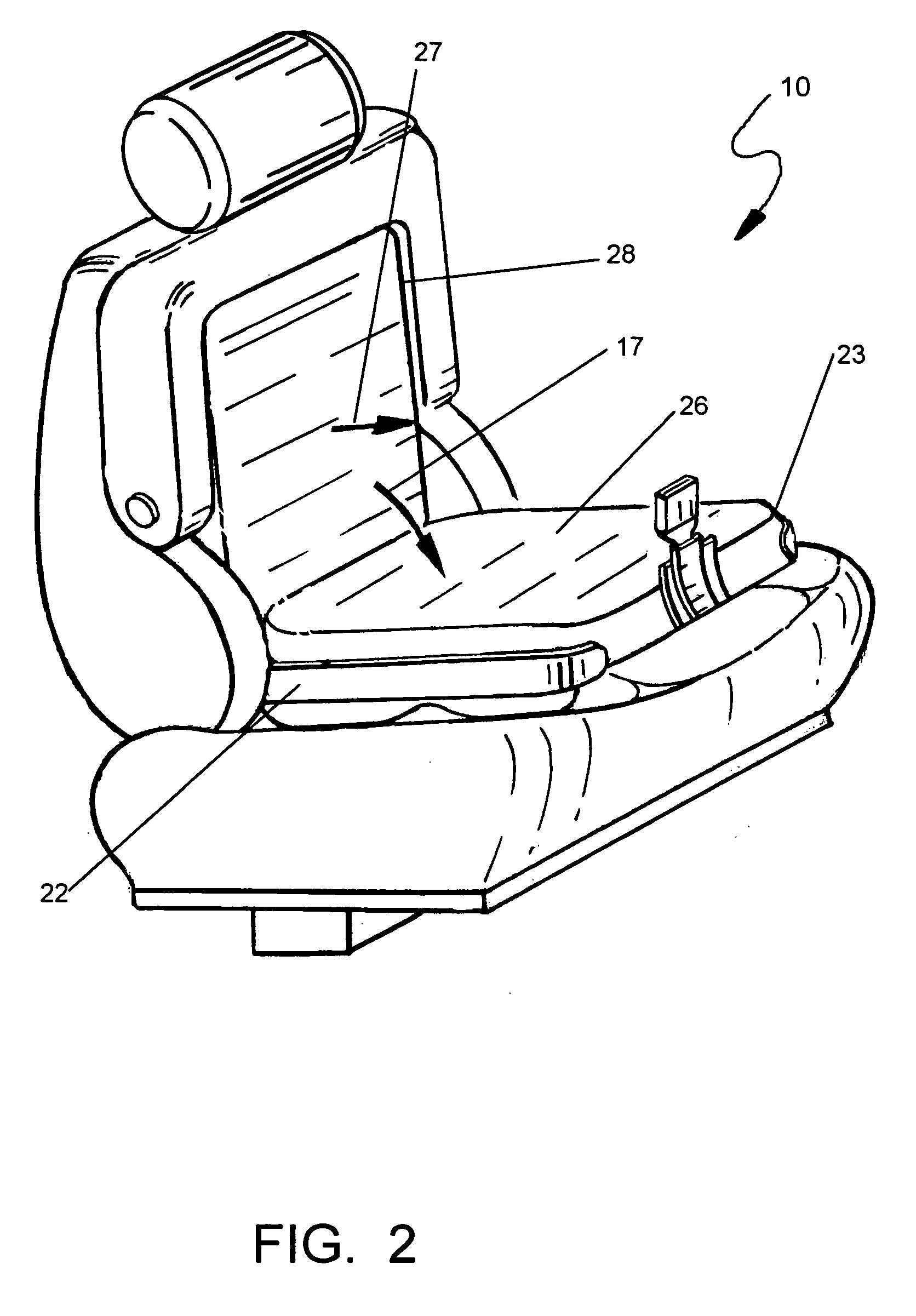Vehicular seat assembly
a technology for vehicle seats and seats, applied in the field of child seats, can solve the problems of improper installation of % of these seats, and the general inability of integrated booster seats to accommodate infants and/or toddlers, and achieve the effect of increasing stability
- Summary
- Abstract
- Description
- Claims
- Application Information
AI Technical Summary
Benefits of technology
Problems solved by technology
Method used
Image
Examples
Embodiment Construction
[0027] The seat assembly of the current invention is capable of seating four different types of persons. In the configuration shown in FIG. 4, seat assembly 10 is configured to seat an “infant,” meaning a person that is generally less than one-year-old or that weighs less than about twenty (20) pounds, in a rear-facing position using an “infant restraint system” that is integral to seat assembly 10. In the configuration shown in FIG. 3, seat assembly 10 is configured to seat a “toddler,” meaning a person that is generally older or larger than an infant but not more than forty (40) to sixty-five (65) pounds, in a forward-facing position using a “toddler restraint system” that is integral to seat assembly 10. In the configuration shown in FIG. 2, seat assembly 10 is configured as a booster seat to seat a “youth,” meaning a person that is generally larger than a toddler but less than about fifty-six (56) inches tall (i.e. not tall enough to use the vehicle's standard restraint system w...
PUM
 Login to View More
Login to View More Abstract
Description
Claims
Application Information
 Login to View More
Login to View More - R&D
- Intellectual Property
- Life Sciences
- Materials
- Tech Scout
- Unparalleled Data Quality
- Higher Quality Content
- 60% Fewer Hallucinations
Browse by: Latest US Patents, China's latest patents, Technical Efficacy Thesaurus, Application Domain, Technology Topic, Popular Technical Reports.
© 2025 PatSnap. All rights reserved.Legal|Privacy policy|Modern Slavery Act Transparency Statement|Sitemap|About US| Contact US: help@patsnap.com



